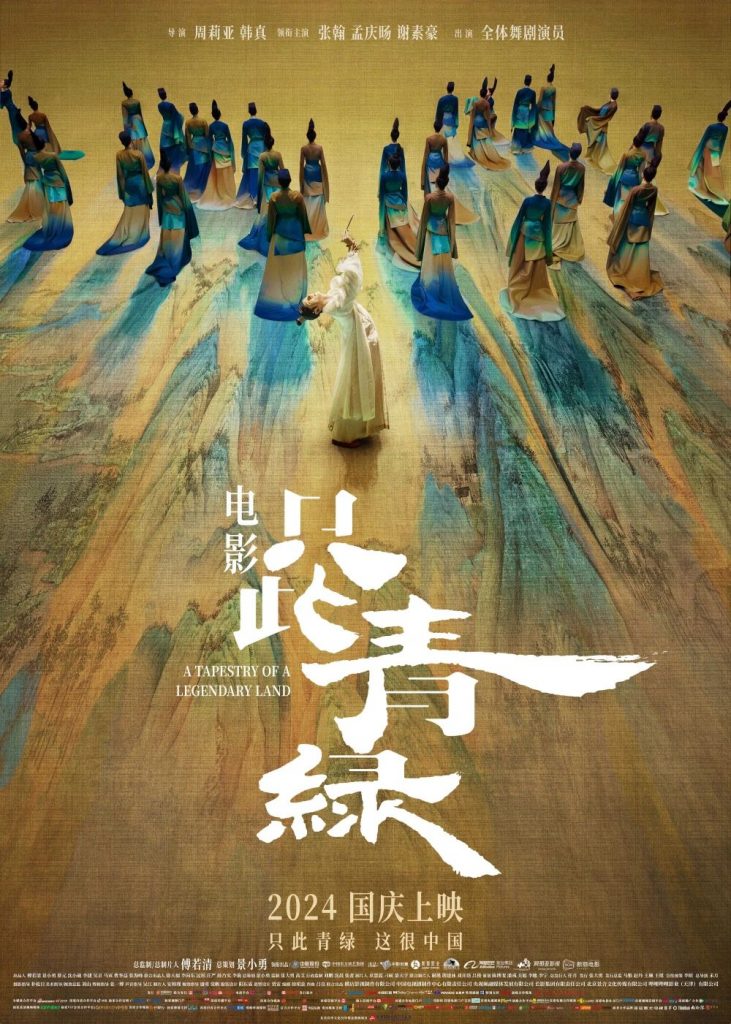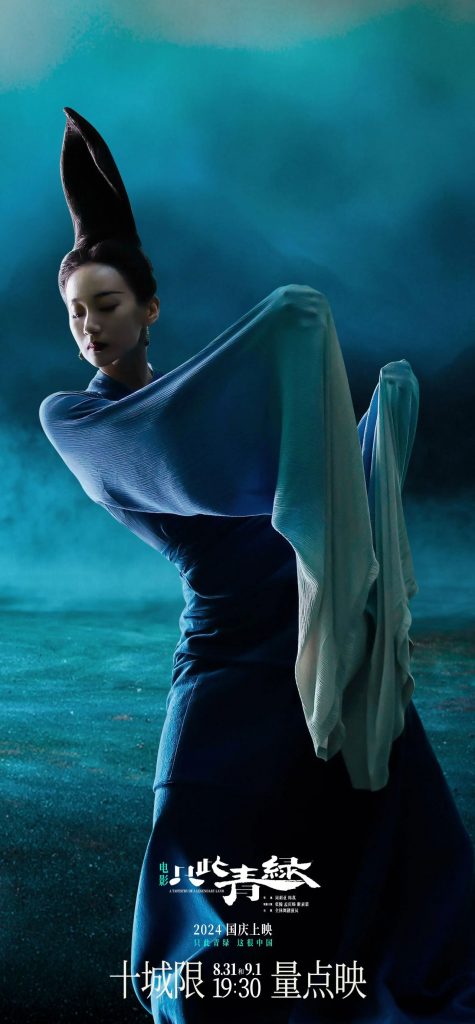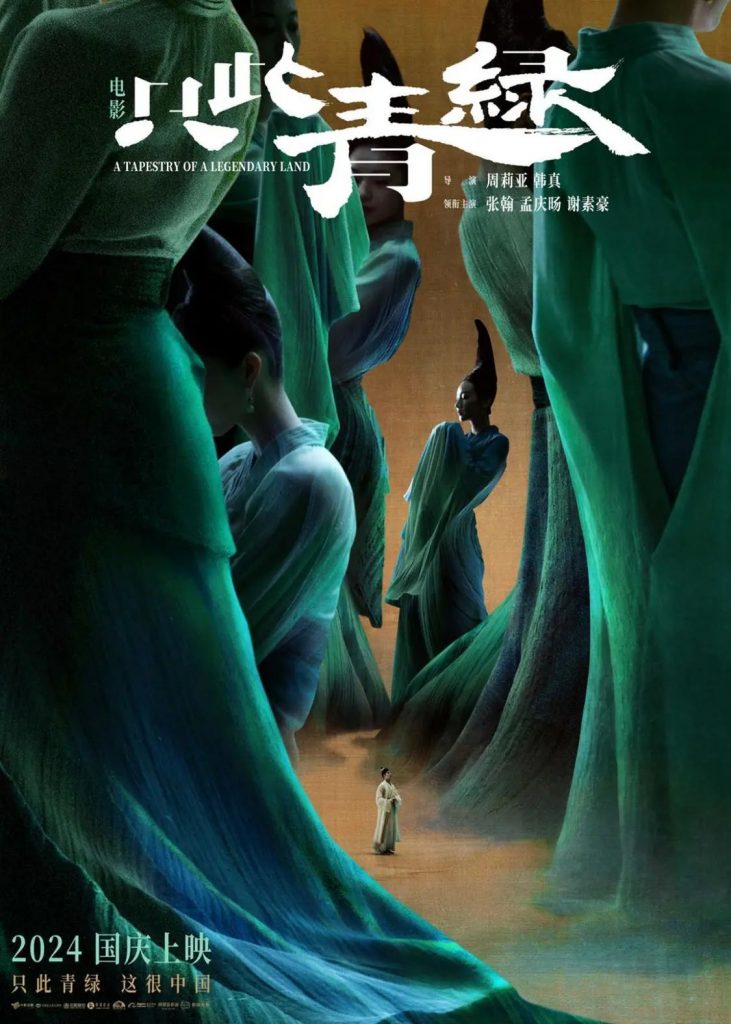“A Tapestry of a Legendary Land”, also known as “Only the Cyan and Green” directed by Zhou Liya / Han Zhen, released at the 2024 National Day festival, currently rated 8.0 on douban.com, is considered to be the best new film of the national day archives reputation.
Directed by Zhou Liya and Han Zhen, the film is adapted from the dance drama of the same name. It is co-written, directed and performed by the original stage cast and filmmakers. The picturesque visual style of the film combines traditional Chinese aesthetics with modern film language to create a simple and novel viewing experience, which brings a long scroll titled A Thousand Miles of Rivers and Mountains “live” onto the big screen.
In this issue we invited Mr. Antonio Zhang, General Manager and Head Colourist of SHANG TIAN PICTURES CO.,LTD., to share the colour process of this film.
Can you briefly describe the background of the project, if you have worked with the director of photography before and why you used Baselight for colour matching?
The director of photography for “Only the Cyan and Green” was Mr. Piao Songri. We have worked together on a lot of other films, but in the past most of the works and themes were based on the realism of expression. This time “Only the Cyan and Green” hopes to make a breakthrough in colour style.
The main decision for choosing Baselight was based on the characteristics of the project. First of all, I hoped that the colour would have a strong unity. However, as well as a basis of unity there should also be a level of distinction such that each frame is composed of a variety of different levels of the same hue. This requires us to be able to colour as much as possible by breaking down each colour, from the brightness, degree of saturation, and so on. After a lot of consideration and consultation with our team we decided to use Baselight for this film.
Please describe the main features of this project?
“Only the Cyan and Green” is a movie version of a dance drama – the original version of which enjoyed huge success. The director of the dance drama has very rich experience and the quality of the dancers is also very high. The direction and overall visual planning of the film adaptation was very clear, so the production stage of the project was very smooth. The film was shot using ARRI’s digital cameras, with the use of RED and Phantom for some specially scheduled shots.
What were the main colour tools you used in Baselight and what are their characteristics?
The overall colour style of the film was established in Baselight – we used the Baselight T-Log / E-Gamut working space, the reason for choosing this colour space was to be able to apply the colour style in a colour space as large as possible. The most important aspect of the film was making a careful distinction between the two colours of cyan and green, but also to maintain a harmonious unity because the two colours are actually very close in hue. For the colourist it was necessary to use colour tools which could control the subtle differences between the two colours – the tools used by the colourist directly determine the richness of the colour of the whole film. In order to maintain the purity on screen as much as possible, we used the new X Grade tool in Baselight 6.0 to adjust each colour block independently, on the basis of not creating a ‘separation’ as much as possible. We also used Baselight’s Scene Look to create styles. Because the stylized conditions in Scene Look are based on a wide colour gamut, and can be applied to subsequent HDR versions, the colourist’s work is more comfortable and accurate.
Did you use the Face Track tool developed by Baselight based on the AI large language model, and how was the experience?
Yes, we use this AI tool a lot in colour correction. Because the treatment of skin colour is also a very important part of the film, it is also important to make each dancer’s skin colour have texture. Face Track helps the colourist by saving as much time as possible on Roto work as it can extract the actor’s face completely, without worrying about the shift caused by changes in the lens perspective. Professional and customized AI tools are practical for us.
Can you tell us if you used Chromogen for the creation of styles in the early stages of development?
Yes, we used a lot of colour settings in Chromogen for setting a style. Some of its sub-tools, such as “Neutral Tint” and “Colour Skew” were heavily used, mainly to make fine adjustments in the cyan and green colours but without ruining the overall picture. Compared with the previous roto separation adjustment method, Chromogen treats each colour independently based on the characteristics of the colour itself, which makes the picture look more complete and natural.
How was your experience of the new timeline management features in Baselight 6.0, and did you use the multi-track functionality?
Baselight’s new timeline management approach is more friendly to colourists and colour assistants. Because a typical film has much content in addition to the picture itself, such as subtitle, captions, and different versions of VFX shots conform and check, you can clearly plan the purpose of each track. This greatly helps the logical management of colouring work. Specifically on “Only the Cyan and Green” we separated the VFX shots, the content of the subtitles and the opening and ending credits into independent tracks which made them clearer work with on the timeline. Each person involved in the project could then see the layout at a glance which improved team work and efficiency.
What are the problems with multi-version output, and what are the advantages of Dolby Vision production?
When we started working on the DI colour session we knew that apart from the regular DCI version we had to make all the other high format versions. This was one of the reasons we chose T-Log / E-Gamut as our colour space. For the Dolby Vision Version we used T-CAM and chose 108nit as the Viewing Condition, this saved a lot of time for the Dolby Vision Cinema Edition. We wanted to make the HDR version darker and the highlights more realistic.
After your experience on a real project, are there any features you would like to see improved in Baselight?
“Only the Cyan and Green” is a film adaptation of a dance drama, but the actual number of VFX shots in the film is still very large. For such projects, I hope that Baselight can be more flexible in the use of channel overlays provided by visual effects lenses.
I’ve heard that the upcoming Baselight 7.0 will significantly improve the efficiency of VFX matte channels, and I look forward to that.
What are your expectations for the introduction of artificial intelligence technology in colour grading?
I hope that AI can help colourists with some basic colour correction work, such as precise automatic roto, simple colour matching, and so on. I know that Baselight 7.0 will make significant use of AI technology to improve the extraction and use of masks, and I hope that we can use it in real film production as soon as possible.
For more information about the famous scroll that the film is based on, which was painted in the 11th century, check out the Wikipedia article.





